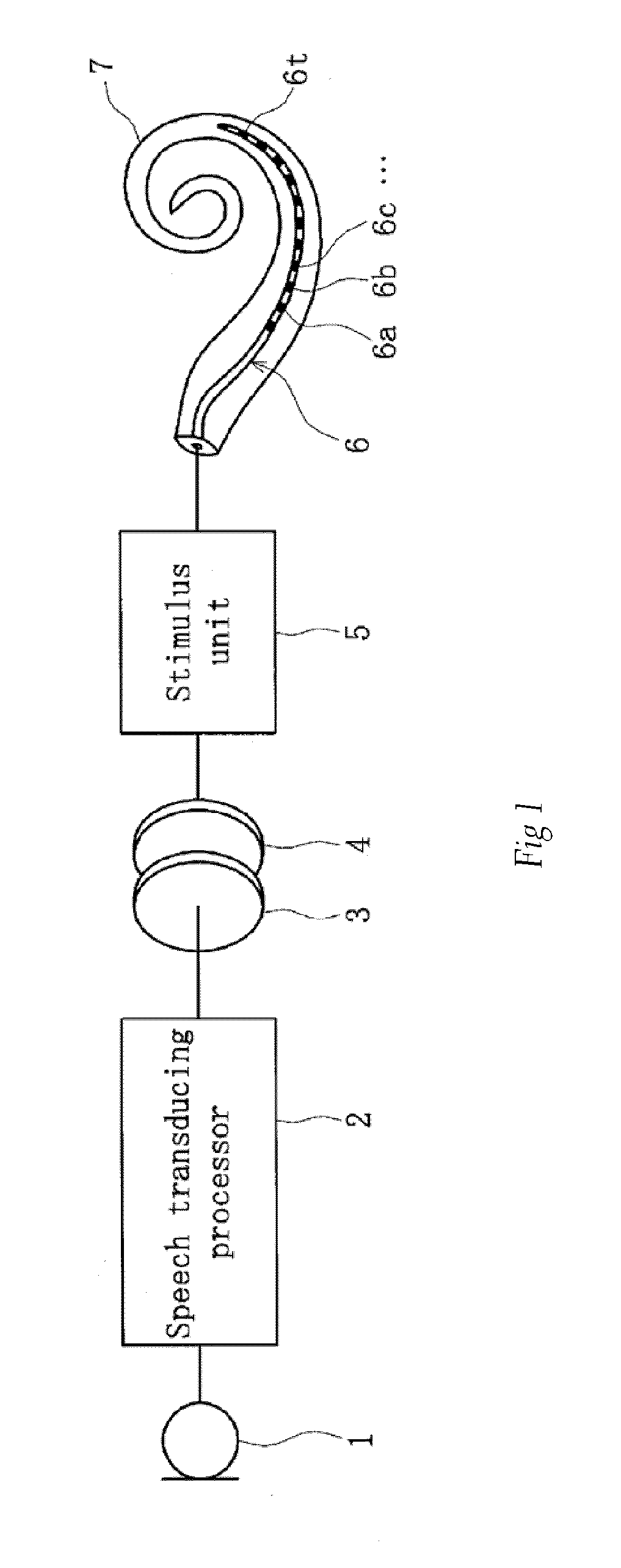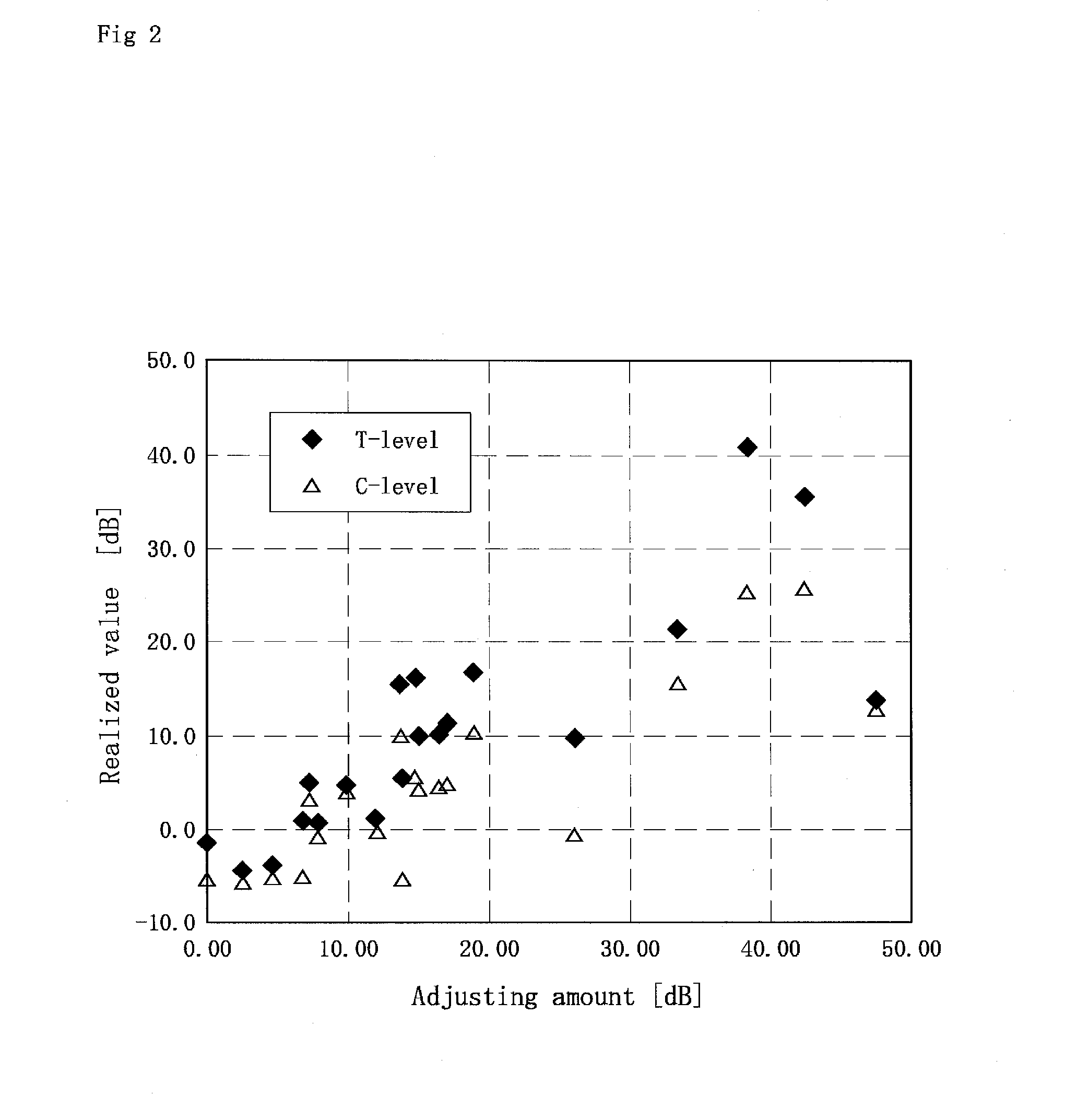Method for adjusting an audio transducing processor
- Summary
- Abstract
- Description
- Claims
- Application Information
AI Technical Summary
Benefits of technology
Problems solved by technology
Method used
Image
Examples
Embodiment Construction
[0021]Preferred embodiments of the present invention will be described with reference to the accompanying drawings.
[0022]A cochlear implant to which embodiments of the present invention can be applied is used for augmenting audition by delivering audio information as stimulus pulse to a cochlea of a wearer and can comprise, as shown in FIG. 1, a microphone 1 for picking up outside audio as electric signals, an audio transducing processor 2 for performing audio processing in accordance with a program to transduce the audio information sampled via the microphone 1 to stimulus pulses, an outside coil 3 forming an antenna outside of a wearer's body, an inside coil 4 forming an antenna inside of a wearer's body, a stimulus unit 5 for transducing the audio information sent from the audio transducing processor 2 to electric stimulus pulses via the outside coil 3 and the inside coil 4, and an electrode array 6 arranged in a cochlea 7 of the wearer and including a plurality of electrodes 6a-...
PUM
 Login to View More
Login to View More Abstract
Description
Claims
Application Information
 Login to View More
Login to View More - R&D
- Intellectual Property
- Life Sciences
- Materials
- Tech Scout
- Unparalleled Data Quality
- Higher Quality Content
- 60% Fewer Hallucinations
Browse by: Latest US Patents, China's latest patents, Technical Efficacy Thesaurus, Application Domain, Technology Topic, Popular Technical Reports.
© 2025 PatSnap. All rights reserved.Legal|Privacy policy|Modern Slavery Act Transparency Statement|Sitemap|About US| Contact US: help@patsnap.com



